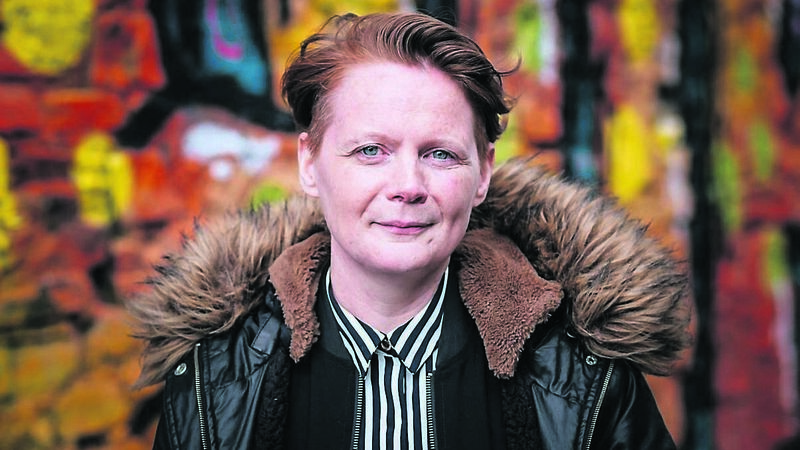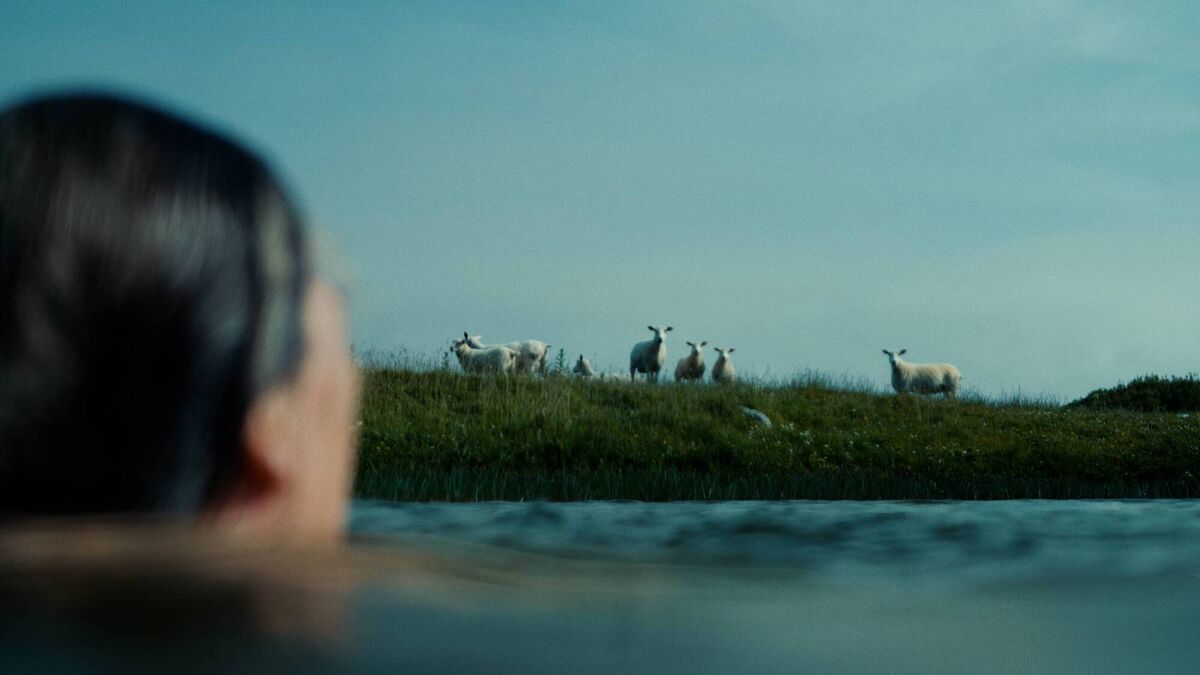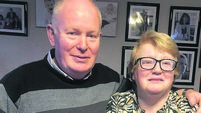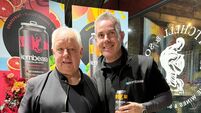Cork film-maker: Why I made a documentary about sheep

Cara Holmes, the director of Notes From Sheepland
Why did you want to make a documentary about sheep?
It is not a question many writers expect to ask, although the sheep are not really what drew the Cork-based filmmaker Cara Holmes to make Notes From Sheepland.
Orla Barry is a visual artist and filmmaker with a long history of exhibiting at the Crawford Art Gallery. Art is her lifeblood, and she can find inspiration in almost anything.
But Barry is also something else: she is a shepherd raising a beloved flock of pedigree Lleyn sheep in Wexford.
Holmes didn’t set out to make a documentary about a sheep herding artist.
“I set out to make a straightforward documentary about women and farming. I was curious to know that side of the farming story in Ireland.
“I have been working as an editor for the last 15 years. In the last few years, I moved to directing and a big focus was putting more women in front of the camera and telling more Irish women’s stories.”
A mutual friend suggested that Holmes speak with Barry, explaining how she was both an artist and a farmer. The combination immediately piqued Holmes’s interest.
“The idea that she is a visual artist, a writer and a sheep farmer pulled me in. When I got in touch with Orla, she invited me down to the farm. She introduced me to the sheep by name, and I was blown away.”

Holmes doesn’t exaggerate; Barry does call each sheep by name. That in itself isn’t odd. Many farmers give names to their animals, but Barry knows each sheep deeply.
She knows their quirks. She loves her sheep with a passion that is borderline obsessive. “Orla talked about how good-looking her sheep were. I couldn’t get my head around that. It stayed with me.” says Holmes.
Barry was launching her new book at the Crawford, and it was there that Holmes decided she had to tell Barry’s story.
“Orla had a few speakers at the launch who read extracts from the book. I was totally pulled in. It’s a mix of personal stories and poetry. It was kind of like a fever dream and so unconventional. I am very interested in unconventional ways of living, and Orla is the perfect example. I knew I had to make the film, and fortunately, Orla was receptive to the idea.”
Barry’s love for sheep is extraordinary, and she expresses it through her art. As a result, her work is so linked to her sheep that it would be impossible to separate the two.
Holmes applied for funding through the Arts Council’s Reel Art Scheme, which supports experimental documentaries.
“As an editor, I have worked in more traditional documentaries. I wanted to move away from the traditional format, and Orla was also up for that.” The documentary plays with format and mixed media. The aspect ratio changes, poetic texts dance across the screen, and the sheep are filmed up close, their big eyes often taking up the lens’ focus.
The documentary style complements Barry’s art, but as a fellow filmmaker, did Holmes ever find it hard to hold to her idea of what the film should be, and not be influenced by Barry’s filmmaking past?
“Communication was important from the start, and our roles were very defined. Orla was the writer, and I was the filmmaker, but collaboration is never straightforward. The main thing was my excitement to understand and follow her world.”
The film-maker says they interviewed Barry for three days in her house to get a sense of her world and get inside her brain.
“From there, I started assembling the project. I sent different clips to make sure Orla was on board with my direction, and after that, she was happy for me to continue with my creative team.”
Although Holmes’s father was a horticulturist, she had no livestock farming experience and says filming on the farm was an eye-opening experience.
“Orla had to teach me so much and explain how filming would have to follow the sheep calendar year. I didn’t understand the obsession at first or why Orla loves her sheep so much, but I started to understand as time passed. I came to see why sheep farmers are willing to put in so much work year after year.
“It is a hard life, especially for Orla, who is in pedigree breeding.”
Barry’s bringing her sheep into her creative art world makes life even more challenging, but it also enriches it, as is apparent throughout the documentary.
Holmes says it is vital that female directors tell female-led stories, and while the industry is changing, it needs to move faster.
“There is a conscious shift in diversifying the industry, but there’s an awful lot more to do, in terms of more female representation, but also in terms of disability, queer, Black and Asian filmmakers. It’s changing, but I’m always really impatient. I want things to change very quickly.”
Holmes moved to Cork a few years ago and has an office in Civic Trust House, which she says is a lifeline for artists.
“I did all the pre-production and editing for Notes From Sheepland there. It’s a brilliant space and a lifeline for artists who need somewhere to work in a creative environment.”
She hopes that audiences enjoy the insight into Barry’s world.
“I hope they immerse themselves into this world of a woman who has found her place. If you can find your place in this mad, wonderful world, that is very special.”
Notes From Sheepland screens at the Triskel Cinema from Sunday, July 28, Cert: 12a triskelartscentre.ie






 App?
App?





